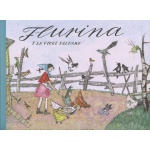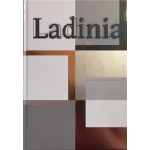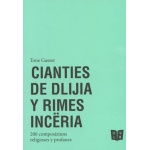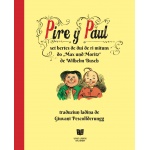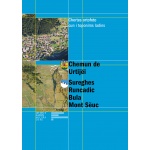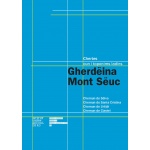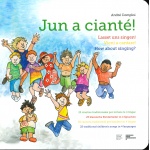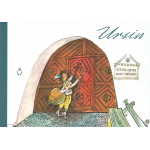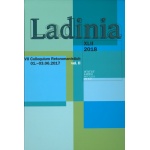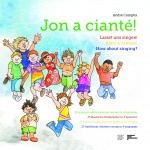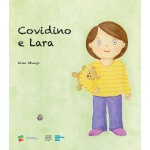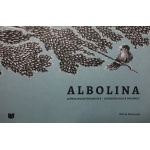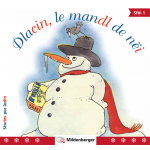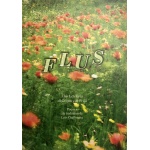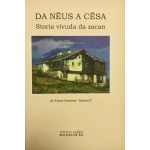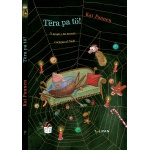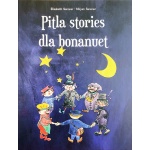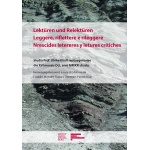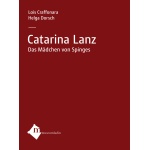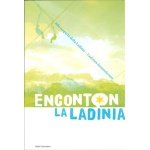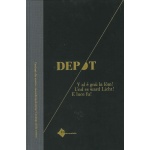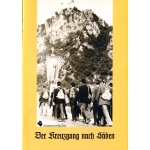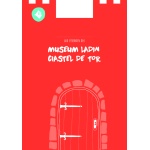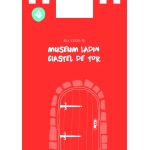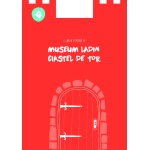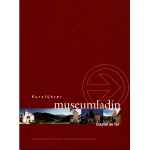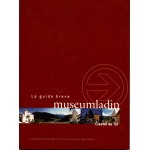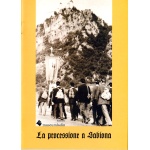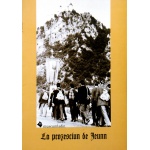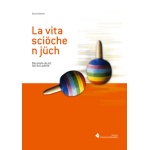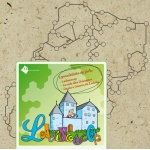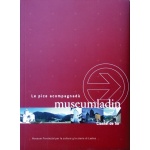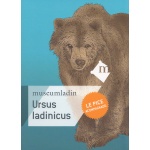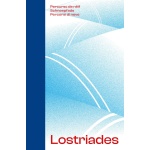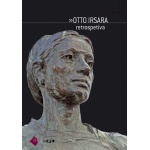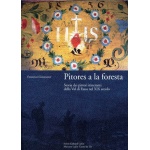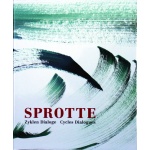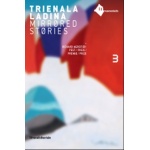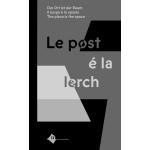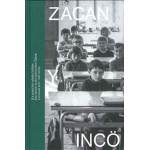Sort de documënt: Revista Ladinia
Titul: Oswald von Wolkenstein e la Ladinia: alcune considerazioni
Oswald von Wolkenstein e la Ladinia: alcune considerazioni
Capelli, Dario
Descriziun: Ladinia XLVII, 213–238
https://doi.org/10.54218/ladinia.47.213-238
Ressumé
Chësc stüde ó ejaminé les realisaziuns desvalies dl raport danter la Ladinia y Oswald von Wolkenstein, n autur sudtirolesc nasciü tl tëmp danter l’ann 1376 y l’ann suandënt, y mort tl 1445. Ince sc’al á passé tröp tëmp de süa vita dalunc dai posć olach’al ê nasciü, é Oswald dagnora romagnü lié a so daciasa, coch’an vëiga ince fora sides da so corpus leterar co dala documentaziun rica che nes é gnüda lasciada indô. Le lian cun i raiuns ladins, en particolar, vá te döes direziuns prinzipales: da öna na pert él n valgügn fostüs dl lingaz ladin gherdëna te süa produziun leterara, dal’atra él la rezeziun de Oswald tl raiun ladin dal 19ejim secul inant.
Tl pröm caje indentëia Oswald, te dui Lieder scric te deplü lingac, coche divertissement de n stil alt y proa de so savëi, mec fersli y/o parores singoles te n lingaz a chël che ël instës ti dij welsch. N stüde de Heinrich Kuen, publiché te chësta revista tl 1979 y ciamó incö d’importanza primara, á identifiché chësc lingaz coche varianta gherdëna dl ladin, che Oswald â plü dessigü imparé canch’al ê n te möt y che ël conscidrâ coche so secundo lingaz dla uma, adöm cun le todësch, tl pröm di dui Lieder plurilinguai nominá. Tan pice che l’elemënt ladin tl corpus leterar de Oswald pó ince ester, rapresentëiel, dal punt d’odüda filologich y glotologich, n unicum de relevanza cumprovada, ajach’al antizipëia oramai de n secul le pröm test scrit – ince sce ma en pert – te n lingaz neolatin tl raiun sudtirolesc y de trëi secui sides la costituziun de n sentimënt identitar ladin co i pröms tesć leterars ladins, che é ince scric tla varianta de gherdëna.
Por ci che reverda la rezeziun de Oswald tla Ladinia, vëgnel indere mostré sö la contradiziun dles tröpes interpretaziuns dl mit Oswald coche politich y autur leterar, por gauja de chëres che l’interes dla comunité academica ti confrunc de chësc fenomen, che ne s’á indî nia ciamó desfanté, é romagnüda plütosc picera.
La secunda pert de chësc contribut recostruësc, tres n confrunt cun i stüdi de Hans-Dieter Mück y de Roland Verra, impröma na origina da capí dla “liënda” dolomitica de Oswald “Man de Fer”, y conscidrëia spo les omajes a Oswald tl ciamp leterar, dles traduziuns, musical y artistich, tolon ite personalités che ti stá a cör ala cultura ladina, coche Frida y Luis Piazza.
Por stlüje jö vëgnel evidenzié n lian stabil y che döra tl tëmp danter Oswald von Wolkenstein y la Ladinia, valorisé ince a livel istituzional, y che podess tl dagní ince porté pro da renforzé i lians cun les comunités sudtirolejes de lingaz todësch y talian y ince cun le rest dla Talia y dl’Europa, che é trames stades scenars dla vita y dles operes de Oswald.
Abstract
The present study intends to examine the different demonstrations of the relationship between Ladinia and Oswald von Wolkenstein, a South Tyrolean author born at the turn of 1376 who died in 1445. Despite of a life characterized by long periods spent far away, Oswald remained very attached to his homeland, as can be seen both in his literary work and in the extensive documentation that has been preserved. His affinity for the Ladin territories is reflected in special ways with regard to two main aspects: on the one hand, traces of the Ladin language of Val Gardena can be found in Oswald’s literary production, and on the other hand it shows by the way Oswald was received in the Ladin area from the 19th century onwards.
With regard to the first aspect, Oswald includes semi-verses and/or specific terms in a language he called Welsch in two plurilingual Lieder, meant as a sophisticated divertissement and evidence of his mastery. A study published by Heinrich Kuen in this journal in 1979 which still is of major relevance today, identified this idiom with the Gardena variant of Ladin. Oswald probably acquired it during his childhood and recognized it as his second mother tongue together with German in the first of the two above-mentioned plurilingual Lieder. From a philological and linguistic point of view the Ladin element in Oswald’s literary work is without equal and of utmost importance because it anticipates by almost a century the first text partially written in a neo-Latin language in the South Tyrolean area. It also anticipates by three centuries both the creation of a Ladin identity and the very first Ladin literary texts that were also written in the Gardena variant.
As far as literary reception of Oswald in Ladinia is concerned, notwithstanding numerous revivals of the legend of Oswald as a politician and as a literary author, there has been relatively little interest in the academic community. By comparing the studies of Hans-Dieter Mück and Roland Verra, the second part of this paper first reconstructs a plausible origin of Oswald’s legend from the Dolomites “Man di Ferro” (literally “Iron Hand”), and then examines the literary, translational, musical and artistic tributes paid to Oswald, including personalities that have been central to Ladin culture such as Frida and Luis Piazza.
In conclusion, a strong and lasting connection between Oswald von Wolkenstein and Ladinia is revealed, reinforced on an institutional level. In the future one could focus on consolidating ties with the German-speaking and Italian-speaking communities in South Tyrol as well as with the rest of Italy and Europe that all proved vital to the background of Oswald’s life and work.
https://doi.org/10.54218/ladinia.47.213-238
Ressumé
Chësc stüde ó ejaminé les realisaziuns desvalies dl raport danter la Ladinia y Oswald von Wolkenstein, n autur sudtirolesc nasciü tl tëmp danter l’ann 1376 y l’ann suandënt, y mort tl 1445. Ince sc’al á passé tröp tëmp de süa vita dalunc dai posć olach’al ê nasciü, é Oswald dagnora romagnü lié a so daciasa, coch’an vëiga ince fora sides da so corpus leterar co dala documentaziun rica che nes é gnüda lasciada indô. Le lian cun i raiuns ladins, en particolar, vá te döes direziuns prinzipales: da öna na pert él n valgügn fostüs dl lingaz ladin gherdëna te süa produziun leterara, dal’atra él la rezeziun de Oswald tl raiun ladin dal 19ejim secul inant.
Tl pröm caje indentëia Oswald, te dui Lieder scric te deplü lingac, coche divertissement de n stil alt y proa de so savëi, mec fersli y/o parores singoles te n lingaz a chël che ël instës ti dij welsch. N stüde de Heinrich Kuen, publiché te chësta revista tl 1979 y ciamó incö d’importanza primara, á identifiché chësc lingaz coche varianta gherdëna dl ladin, che Oswald â plü dessigü imparé canch’al ê n te möt y che ël conscidrâ coche so secundo lingaz dla uma, adöm cun le todësch, tl pröm di dui Lieder plurilinguai nominá. Tan pice che l’elemënt ladin tl corpus leterar de Oswald pó ince ester, rapresentëiel, dal punt d’odüda filologich y glotologich, n unicum de relevanza cumprovada, ajach’al antizipëia oramai de n secul le pröm test scrit – ince sce ma en pert – te n lingaz neolatin tl raiun sudtirolesc y de trëi secui sides la costituziun de n sentimënt identitar ladin co i pröms tesć leterars ladins, che é ince scric tla varianta de gherdëna.
Por ci che reverda la rezeziun de Oswald tla Ladinia, vëgnel indere mostré sö la contradiziun dles tröpes interpretaziuns dl mit Oswald coche politich y autur leterar, por gauja de chëres che l’interes dla comunité academica ti confrunc de chësc fenomen, che ne s’á indî nia ciamó desfanté, é romagnüda plütosc picera.
La secunda pert de chësc contribut recostruësc, tres n confrunt cun i stüdi de Hans-Dieter Mück y de Roland Verra, impröma na origina da capí dla “liënda” dolomitica de Oswald “Man de Fer”, y conscidrëia spo les omajes a Oswald tl ciamp leterar, dles traduziuns, musical y artistich, tolon ite personalités che ti stá a cör ala cultura ladina, coche Frida y Luis Piazza.
Por stlüje jö vëgnel evidenzié n lian stabil y che döra tl tëmp danter Oswald von Wolkenstein y la Ladinia, valorisé ince a livel istituzional, y che podess tl dagní ince porté pro da renforzé i lians cun les comunités sudtirolejes de lingaz todësch y talian y ince cun le rest dla Talia y dl’Europa, che é trames stades scenars dla vita y dles operes de Oswald.
Abstract
The present study intends to examine the different demonstrations of the relationship between Ladinia and Oswald von Wolkenstein, a South Tyrolean author born at the turn of 1376 who died in 1445. Despite of a life characterized by long periods spent far away, Oswald remained very attached to his homeland, as can be seen both in his literary work and in the extensive documentation that has been preserved. His affinity for the Ladin territories is reflected in special ways with regard to two main aspects: on the one hand, traces of the Ladin language of Val Gardena can be found in Oswald’s literary production, and on the other hand it shows by the way Oswald was received in the Ladin area from the 19th century onwards.
With regard to the first aspect, Oswald includes semi-verses and/or specific terms in a language he called Welsch in two plurilingual Lieder, meant as a sophisticated divertissement and evidence of his mastery. A study published by Heinrich Kuen in this journal in 1979 which still is of major relevance today, identified this idiom with the Gardena variant of Ladin. Oswald probably acquired it during his childhood and recognized it as his second mother tongue together with German in the first of the two above-mentioned plurilingual Lieder. From a philological and linguistic point of view the Ladin element in Oswald’s literary work is without equal and of utmost importance because it anticipates by almost a century the first text partially written in a neo-Latin language in the South Tyrolean area. It also anticipates by three centuries both the creation of a Ladin identity and the very first Ladin literary texts that were also written in the Gardena variant.
As far as literary reception of Oswald in Ladinia is concerned, notwithstanding numerous revivals of the legend of Oswald as a politician and as a literary author, there has been relatively little interest in the academic community. By comparing the studies of Hans-Dieter Mück and Roland Verra, the second part of this paper first reconstructs a plausible origin of Oswald’s legend from the Dolomites “Man di Ferro” (literally “Iron Hand”), and then examines the literary, translational, musical and artistic tributes paid to Oswald, including personalities that have been central to Ladin culture such as Frida and Luis Piazza.
In conclusion, a strong and lasting connection between Oswald von Wolkenstein and Ladinia is revealed, reinforced on an institutional level. In the future one could focus on consolidating ties with the German-speaking and Italian-speaking communities in South Tyrol as well as with the rest of Italy and Europe that all proved vital to the background of Oswald’s life and work.
Lingaz: IT
Data: 2023
Autur: Capelli, Dario
Copyright: Istitut Ladin Micurá de Rü - ISSN 1124-1004

